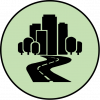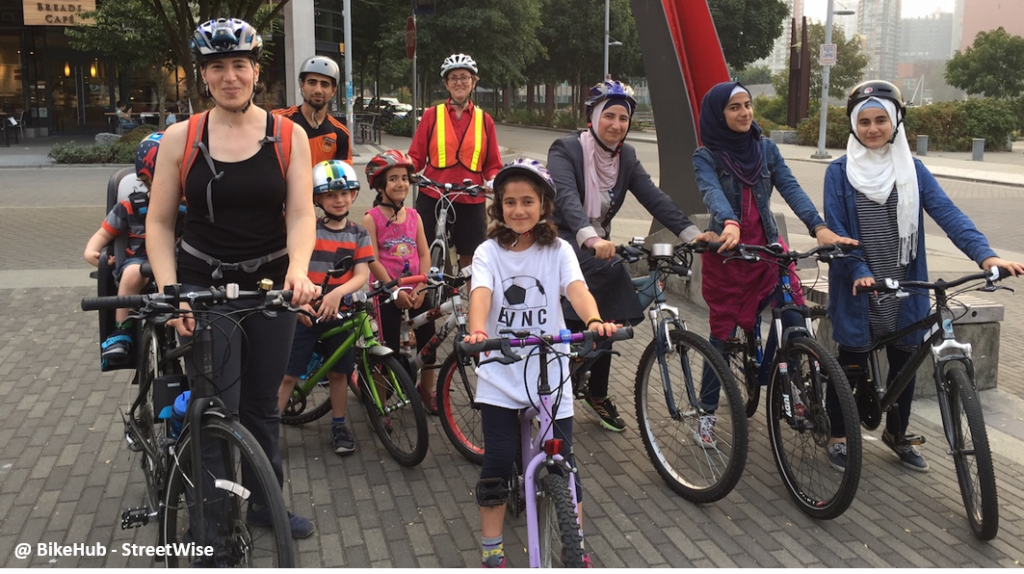
1. Presentation
Live trainining to teach children and adults how to ride a bicycle with confidence and safely in urban settings.
2. Objectives
- Providing everyone the opportunity to learn how to ride a bike, especially in urban settings.
- Developing in the general population the skills to use the bicycle as a means of transport in comfortable and safe conditions.
3. Measure’s Importance
This measure is critical to overcome the most basic barrier to cycling: the ability to ride a bicycle in an urban context and with high levels of motor vehicle traffic.
Because riding a bicycle is a basic skill with multiple advantages for the individual and society, it is essential to provide all people at different stages of life the opportunity to learn to ride on the roads with confidence. In starter cities context, where the cycling is residual, the target group will be relatively large.
1. Good Practices
– Provide all layers of the population access to learn how to ride a bicycle and the skills to ride safely and confidently in traffic.
– Ensure appropriate conditions to learn and experience cycling also by persons with motor and / or intellectual disabilities.
– Provide bicycles for those who don’t have them.
– Develop phased training programmes, focusing on practice, starting in car free zones and then moving onto public roads with car traffic.
– Make a commitment to deliver the programme on a regular basis over time.
– Promote a positive image of cycling through a safe and fun learning environment.
– Properly qualified monitors are essential for teaching children and adults.
– Monitor and reframe measures to meet user needs without compromising sustainable ideals (See Management, Monitoring and Maintenance).
– Explain the principles behind the measures to make it clear its importance and impacts (See Information).
2 Actions
 | Cycling lessons to children In-class instruction on riding, focusing both on practical skills and traffic education, tailored to the child’s stage of development; May include handbooks, videos, posters, visual messages inside the school, brochures targeting parents. These programmes can be more successful if integrated with curricular activities (eventually as part of the national education curriculum), and with the school's mobility plan in order to encourage cycling from a young age and make it a common behaviour (See School Mobility Management). Learn more: Mini cycling/ Ciclaveiro (Pt); Bikeability (UK). |
 | Cycling lessons to adults Adult bicycle lessons, including cycling skills, but also bicycle maintenance and traffic behaviour. Learn more: Adult Bicycle Initiation Course, promoted by the Lisbon City Council, in partnership with the Portuguese Federation of Cycling and Bicycle Users (FPCUB), Lumiar Parish Council and Virgílio Ferreira School. |
1. Impacts
 | Mobility system efficiency Bicycle lesson programmes encourage more people to use their bicycle safely as a means of transportation, contributing to the efficiency of the mobility system. |
 | Livable streets Bicycle classes in the public space promote lively streets and encourage participants to enjoy cycling. |
 | Protection of the environment It will allow more people to ride their bikes on a daily basis, with positive impacts on the environment. |
 | Inclusion, equity and accessibility Providing bike classes in the community or for specific minorities promotes inclusion, especially as it addresses those who have not had the opportunity to learn how to ride a bicycle. |
 | Safety and comfort Cycling classes, for children and adults, promote greater safety and comfort. |
 | Economic value Evidences show that improving bicycle safety and increasing bicycle use can help boost the economy of city centres. |
 | Awareness and acceptability The programme allows to overcome the most basic barrier to cycling, giving the general population the opportunity to develop the skills necessary to ride safely. |
Legend:
| Very positive | Positive | Neutral | Negative | Very negative |
2. Barriers
 | Legal There are no legal barriers to bike lesson programmes. Insurance may be required to teach on public roads. |
 | Finance Bicycle lesson programmes can only reach small groups at a time, which requires considerable material and human resources. Possible sources of funding include: government funds; corporate sponsorship; fees paid by participants, which should be modest in fledgling cities where citizens still do not value the bicycle. |
 | Governance There is great potential for developing partnerships to promote bicycle lessons and may involve public authorities, schools, pro-bicycle associations, public transport operators, healthcare providers, bicycle shops, local businesses, media, etc. |
 | Political acceptability The provision of bicycle lessons does not raise political resistance. |
 | Public acceptability The provision of bicycle classes does not raise public acceptance problems. |
 | Technical feasibility The provision of bicycle lessons should be provided by properly qualified monitors to teach children and adults. |
Legend:
| No barrier | Minimum barrier | Moderate barrier | Significant barrier |
3. Budget
| Area | Measure | Unit | Cost | Implementation year |
| U.K. | Providing bicycles (3000 for free and 1000 loaned), additional equipment, cycling training programmes, maintenance and guided trips | 2 years | £ 0.24 million | Information collected in a 2017 study |
Case study 1: Streetwise Bike Programme – Vancouver (Canada)

Public bike programme with different formats for potential bicycle users in Vancouver, which is a climber city (modal share of around 7%). It comprises different formats, levels and audiences, including immigrant communities. The one-day format includes theory on traffic, how to manoeuvre a bike effectively, and a slow-paced two-hour group ride. The programme also offers a variety of tools and materials for cycling support, such as tips to buy a bicycle, theft prevention, route planning, etc. Operational funds come from participant fees and funding from local authorities and the transport authority.
Learn more: https://bikehub.ca/streetwise
Impact:
 | Mobility system efficiency The scope of the programme has a big impact the city, contributing to the safety and efficiency of the transport system. |
 | Livable streets The programme promotes the use of public space and empowers people to use the bicycle as a means of transport, promoting more livable streets. |
 | Protection of the environment Empowering people to use bicycles as a means of transport reduces car use, with impacts on the environment. |
 | Inclusion, equity and accessibility The programme includes courses for minorities, such as immigrant groups, actively promoting social equity. |
 | Safety and comfort Bike classes, segmented by different target groups, promote greater safety and comfort in cycling. |
 | Economic value No impacts. |
 | Awareness and acceptability The programme allows to overcome the most basic barrier to cycling, giving the general population the opportunity to develop the skills necessary to ride safely. |
Case study 2: Bike-ability cycling skills courses (UK)

British cycling lessons programme for all types of users is focused on learn how to manoeuvre a bike effectively and learn how to ride on the road. It comprises three levels of “Bikeability”, each designed to improve cycling skills, from balance and control on the bike, to planning a ride on busy roads. The programme follows a National Reference Framework to teach how to ride a bicycle with professional instructors, and all participants get certified.
Learn more: https://bikeability.org.uk/
Impact:
 | Mobility system efficiency Offering bicycle lessons through a nationwide quality programme contributes to road training and safety, with potential impacts on the efficiency of the transport system. |
 | Livable streets The programme promotes the use of public space and enables people to safely use their bicycles as a means of transport, promoting lively streets. |
 | Protection of the environment Empowering people to use bicycles as a means of transport, with national coverage, has an impact on increasing cycling and reducing car use, with potential impacts on environmental improvement and awareness. |
 | Inclusion, equity and accessibility The programme is developed in different formats, in groups and individually, allowing to reach different levels of the population. |
 | Safety and comfort Bike classes, segmented by different target groups, promote greater cycling safety and comfort. |
 | Economic value Increasing bicycle use can help to boost the economy of city centres. |
 | Awareness and acceptability The programme allows to overcome the most basic barrier to cycling, giving the general population the opportunity to develop the skills necessary to ride safely. Acting at the national level reinforces and disseminates the societal commitment to cycling. |
Legend:
| Very positive | Positive | Neutral | Negative | Very negative |
Goodman, A .; van Sluijs, E .; Ogilvie, D. (2016). Impact of offering cycle training in schools upon cycling behavior: a natural experimental study. International Journal of Behavioral Nutrition and Physical Activity, 13:34. DOI 10.1186 / s12966-016-0356-z
PRESTO. Promoting Cycling for Everyone as a Daily Transport Mode (2010). Targeted adult cycling training programs. 25 PRESTO Implementation Fact Sheets. Accessed 2 July 2019. Available at: https://ec.europa.eu/energy/intelligent/projects/sites/iee-projects/files/projects/documents/presto_fact_sheet_adult_training_programmes_en.pdf
Taylor, I. & Hiblin, B. (2017). Typical Costs of Cycling Interventions: Interim analysis of Cycle City Ambition schemes. Accessed 2 July 2019. Available at: http://www.transportforqualityoflife.com/policyresearch/cyclingandwalking/
